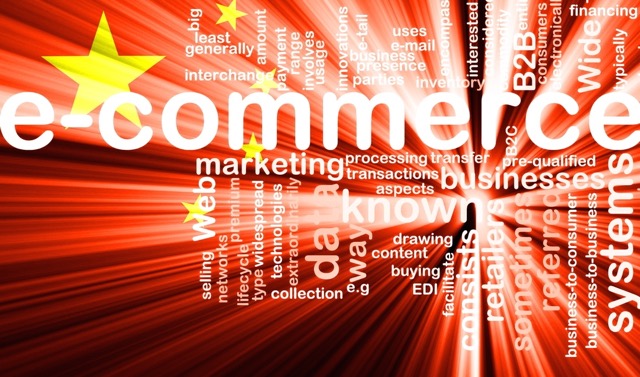
Before opening an online sales channel in China, every company has a fundamental decision to make: build a stand-alone Chinese-language e-commerce website, or open a virtual flagship store on one of the country’s vast e-commerce marketplaces?
This choice, while seemingly simple, is complicated by the differences between Chinese and Western consumers when it comes to online shopping. In the U.S. and U.K., for example, shoppers tend to patronize stand-alone shopping websites that are owned and operated by familiar brands like Apple, Nike and Microsoft. In China, however, an online shopper is more likely to buy, say, an iPhone 6 from Apple’svirtual store on the Tmall.com marketplace—which hosts tens of thousands of independent merchants—than from Apple’s official stand-alone site in China. Indeed, according to a 2013 report from consultancy McKinsey, the vast majority of China e-commerce sales take place via marketplaces (aka “platforms”), leaving stand-alone sites with only about 10% of the pie.
This fact alone suggests a merchant’s first choice when entering China ought to be a marketplace. That’s where the traffic is. Alibaba Group marketplaces Taobao and Tmall.com, China’s largest C2C and B2C websites respectively, together have more than 350 million annual active shoppers, more than the entire U.S. population. Their users are already in a buying mood and can be driven to a store organically through the Taobao product search engine and through promotions. The operators of stand-alone sites, on the other hand, must rely on their own resources to build traffic, starting from zero. Particularly if the brand is new-to-market or niche, this can be difficult and costly.
Marketplaces have other advantages over stand-alone sites: trust and time.
From a consumer trust standpoint, marketplaces have the edge. Tmall, for example, authenticates the products it sells by only allowing brand owners or their authorized agents to operate Tmall storefronts. Shoppers have the option of paying for purchases using Alipay, which holds their payments in escrow until they have received and are satisfied with the goods, thereby removing most of the risk related to online shopping. “Will my package arrive?” and “Will the product match its description?” are questions that disappear when marketplaces act as honest brokers between merchants and buyers. Again, brands that are new to the China market have the most to gain by joining a marketplace, because they might otherwise struggle to win customers’ trust.
Time, too, is on the side of the marketplace. Web development and graphic design for a marketplace store is less demanding compared with building a stand-alone site from scratch, particularly one optimized for smartphones and tablets (essential in China ‚Ķ more than half of Alibaba’s sales came via mobile devices in Q1 this year). Marketplaces have dedicated teams that build seamless, user-friendly mobile apps; they also have battle-tested networks and can provide technical support and marketing guidance, allowing merchants to more selectively dedicate resources and minimize overhead. Tmall even offers a channel solution called Tmall Global that makes it possible for overseas brands to sell directly to Chinese consumers without having to establish a China office or hold inventory in the PRC.
Yet we are not about to close the door on stand-alone sites, which have advantages in the areas of control, transaction costs and flexibility.
With a stand-alone site, the merchant maintains complete control over service policies, web design, and customer data. Merchants can set the pace for how to deal with returns, customer inquiries, and product reviews, and can tailor store design and navigation to suit precisely the desired brand image.
Merchants may also experience lower per-transaction costs as they are not required to pay 2-5% of sales to the marketplace operator. These platform fees can be significant. In the U.S., Amazon charges 15% of gross sales in categories such as beauty, footwear, and personal care.
Finally, stand-alone sites offer flexibility in introducing new products and managing inventory. In marketplaces, new product listings require approval from the operator, which can take weeks or even months. When you run your own site, you can introduce new products at your own pace. Marketplaces tend to have strict inventory requirements which forbid the merchant from selling if the goods are not in stock. However, on stand-alone sites a merchant with some empty bins has the option of continuing to take orders and notifying consumers that shipping may be delayed.
Considering all these factors, the marketplace versus stand-alone decision ultimately hinges on a company’s size, strategy, and resources. Generally speaking, merchants wanting speed-to-market and low costs should gravitate to marketplaces, while deeper-pocketed brands with online experience and existing e-commerce assets might find the stand-alone route relatively more appealing.
But here’s the key:these solutions are not mutually exclusive. We normally recommend a two-pronged approach.First, use a platform store to get in front of as many consumers as possible and to capture transactions.Second, use a stand-alone site for brand awareness and education. World-class brands such as Mars and 3M use this approach.Their stand-alone sites focus on brand stories, product origins, and news releases, while the bulk of sales activity takes place on platforms (Mars and 3M). Using the right approach for each channel gives brands the opportunity to connect with a broad range of potential customers.
Frank Lavin is the chairman of Export Now, which launches and operates e-commerce stores in China for foreign brands.




